5 Basic Decorating Rules According To Interior Designers
Ready to transform your home? These are the 5 of the basic decorating rules you should follow according to interior designers.
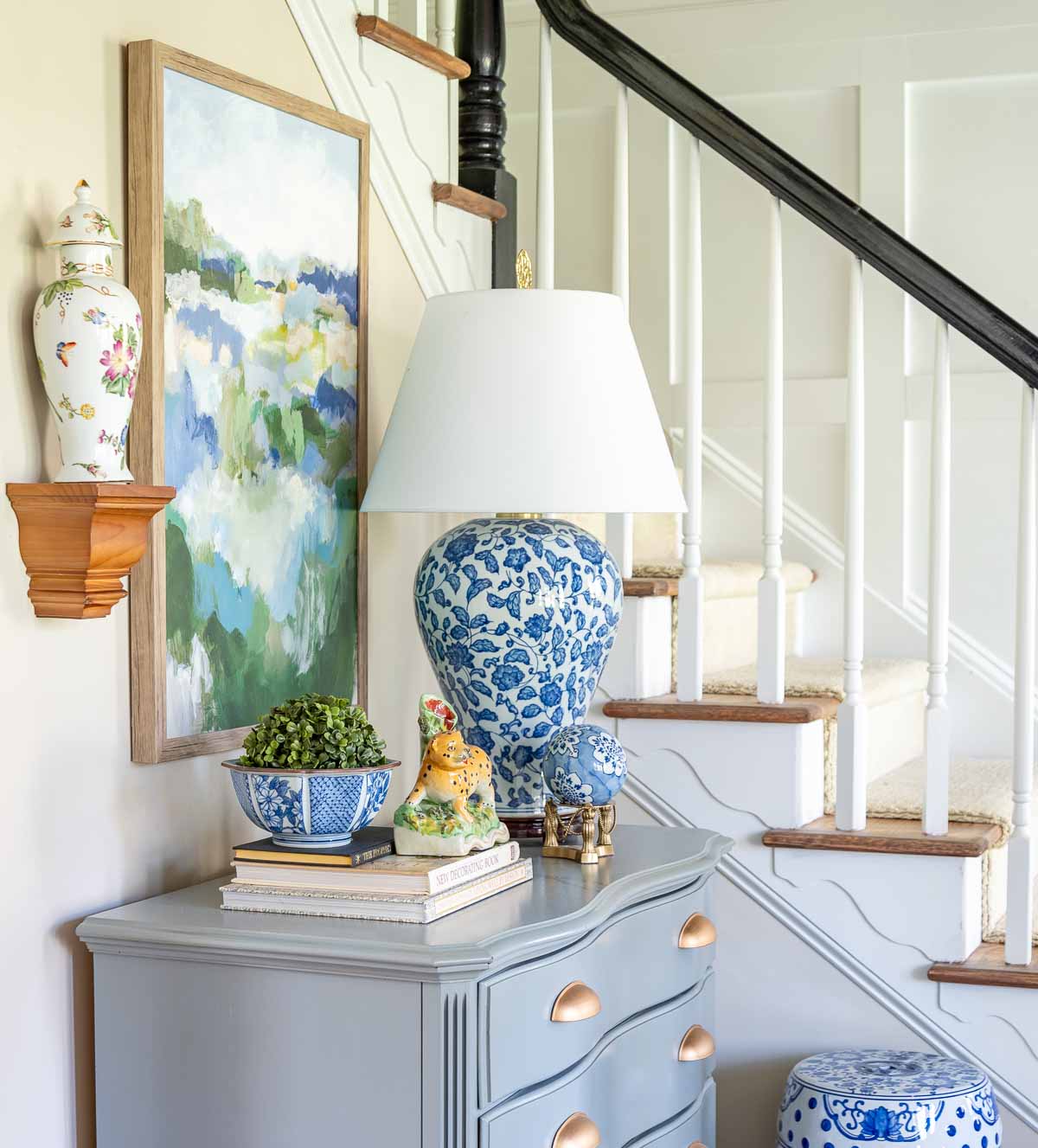
If you were to do any research, you’d find that good interior design has the power to make a space feel more compelling and to amplify your experience in it.
Decorating rules exist for a very important reason, which is to help us make decisions for our home that will turn it into a place that’s comfortable and pleasing to live in.
Great design reaches beyond making a room feel or look good. A well designed room is also a well functioning room.
So, keep in mind that decorating rules don’t exist to dictate the choices that we make, but rather to guide us into making choices that will help our home look its best.
DECORATING RULE #1: THE RULE OF 3
The rule of 3 is so important that it affects just about every aspect of every room in your home! You might even say it’s the golden rule or golden ratio of interior design.
In it’s technical form, it applies to a room’s layout, the size and shape of objects and a kitchen’s work triangle. It even applies to the number of colors, patterns and fabrics.
If you’re already familiar with the term, you may have heard it used most often in reference to arranging vignettes in groups of 3 items.
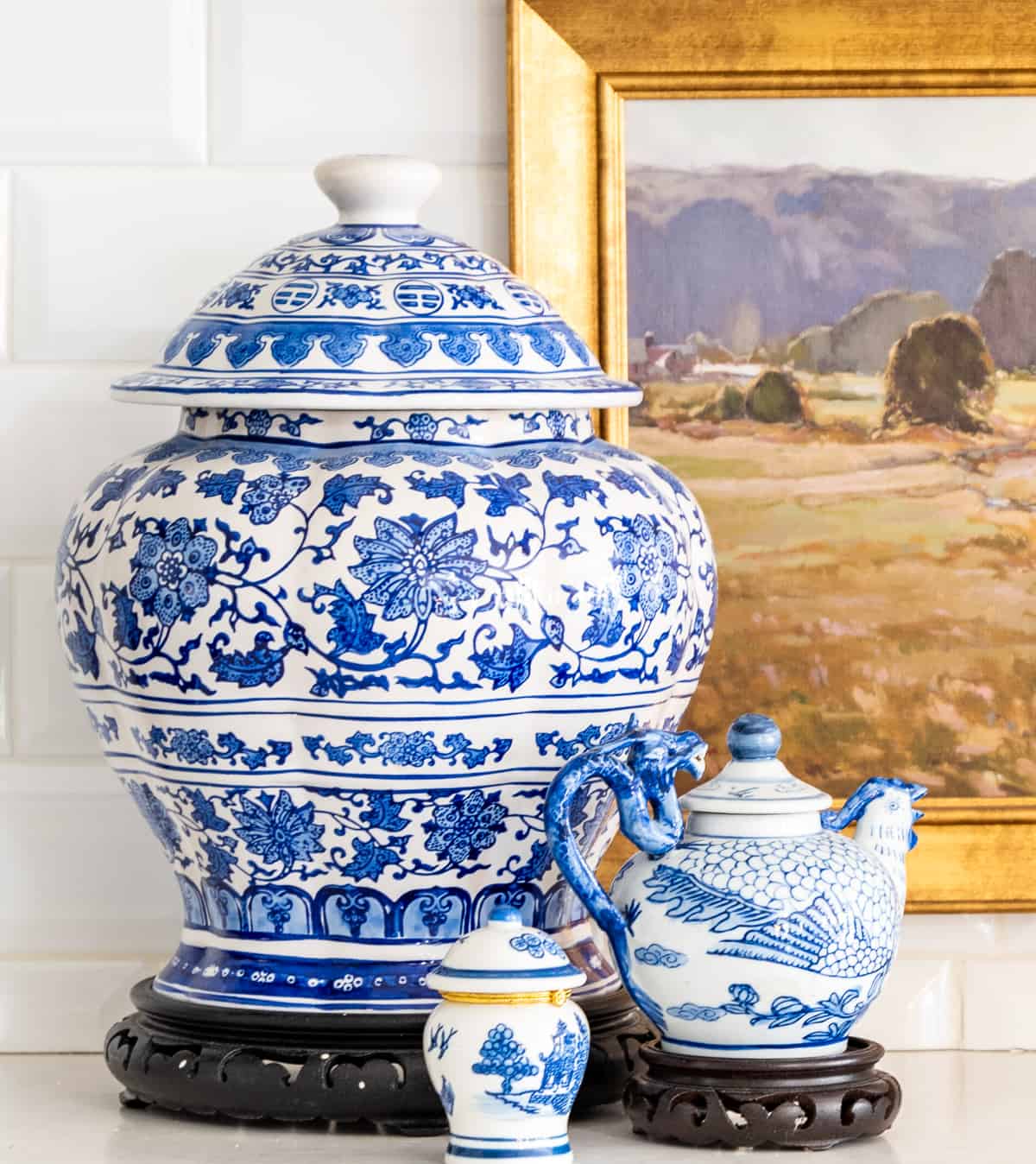
I prefer to call it the rule of odds. There’s just something more appealing to the senses when items are arranged in odd numbers. Three seems to be the most often used number, but groups of 5, 7 or 9 work well too, depending upon the type of arrangement.
Think about a coffee table or side table, for instance. An arrangement of an odd number of items, grouped together is much more appealing to the eye than 2 or even 4. Experiment with a vignette of your own to truly see the impact.
DECORATING RULE # 2: BUILD A STRONG FOUNDATION
I’m talking about space planning. Careful and well thought out space planning may not sound like a fun thing to do, but it’s very necessary.
Not only will it allow you to utilize every nook and cranny in a room, which is especially important in a small space, it will improve both traffic flow and functionality.
For example, you may dream about having two sofas that face one another with a coffee table between them, but that may not work in your space.
I would love to do that in my family room, and even though I do have the room to do it, it would not work for us at all. We would lose the walkways that currently exist going from our hallway and foyer into our kitchen.
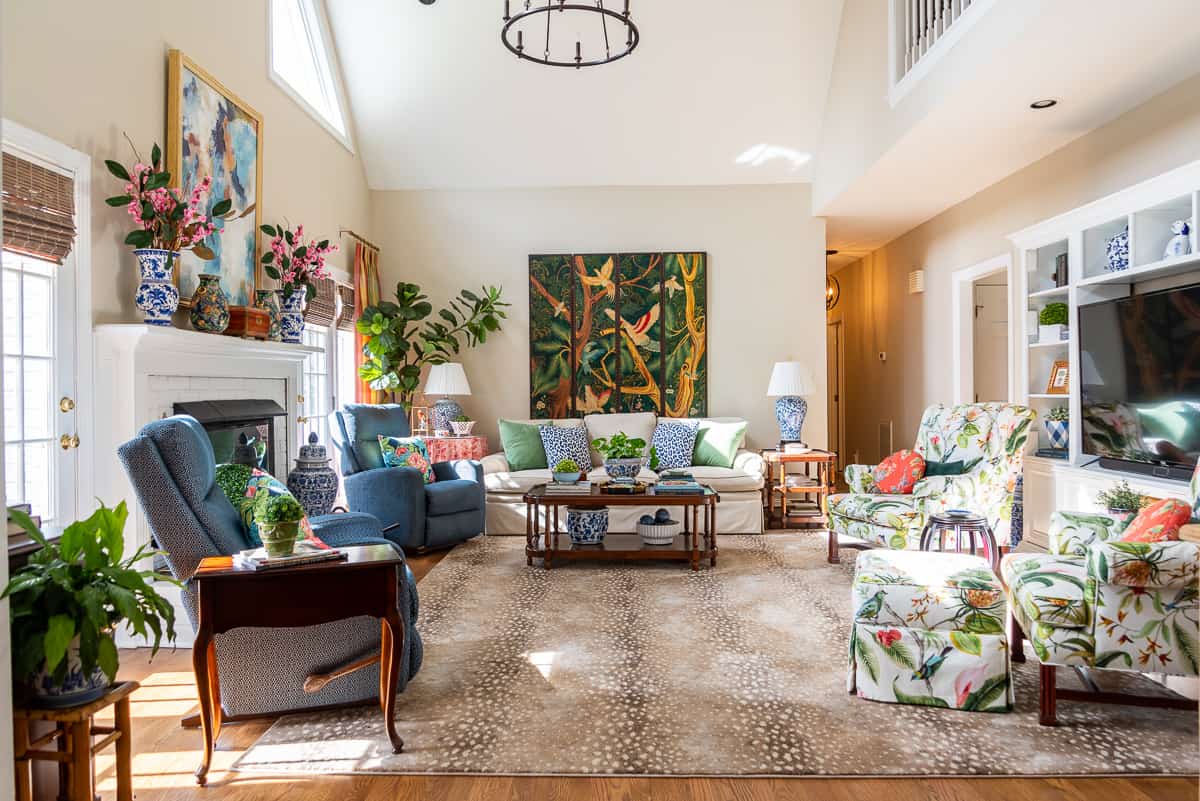
There are three different ways you can tackle space planning besides doing it the hard way of physically moving your furniture around:
METHOD 1: Measure your room and draw it out on a piece of graph paper. Measure each piece of furniture, that will be in the room, then cut out pieces of cardboard or paper to represent each one. Keep the proportions of the furniture pieces the same as the proportions on the graph paper.
Let’s say the squares on your graph paper are ¼” and that each square represents 12″ (or 1′) of space. When cutting out your pieces of furniture, if you have a chair that measures 36″ wide, your little piece of cardboard (or paper) should be ¾” wide. Make sense?
Once you have your room drawn out and have your pieces of furniture, you can move them around on your graph paper until you come up with a furniture arrangement that you like.
METHOD 2: Measure the furniture pieces that will be in the room and use painter’s tape on the floor to represent each piece. This is a little more labor intensive, but it gives a better feel for how the pieces will work in a room.
This method worked especially well for us when we completely gutted and remodeled our kitchen.
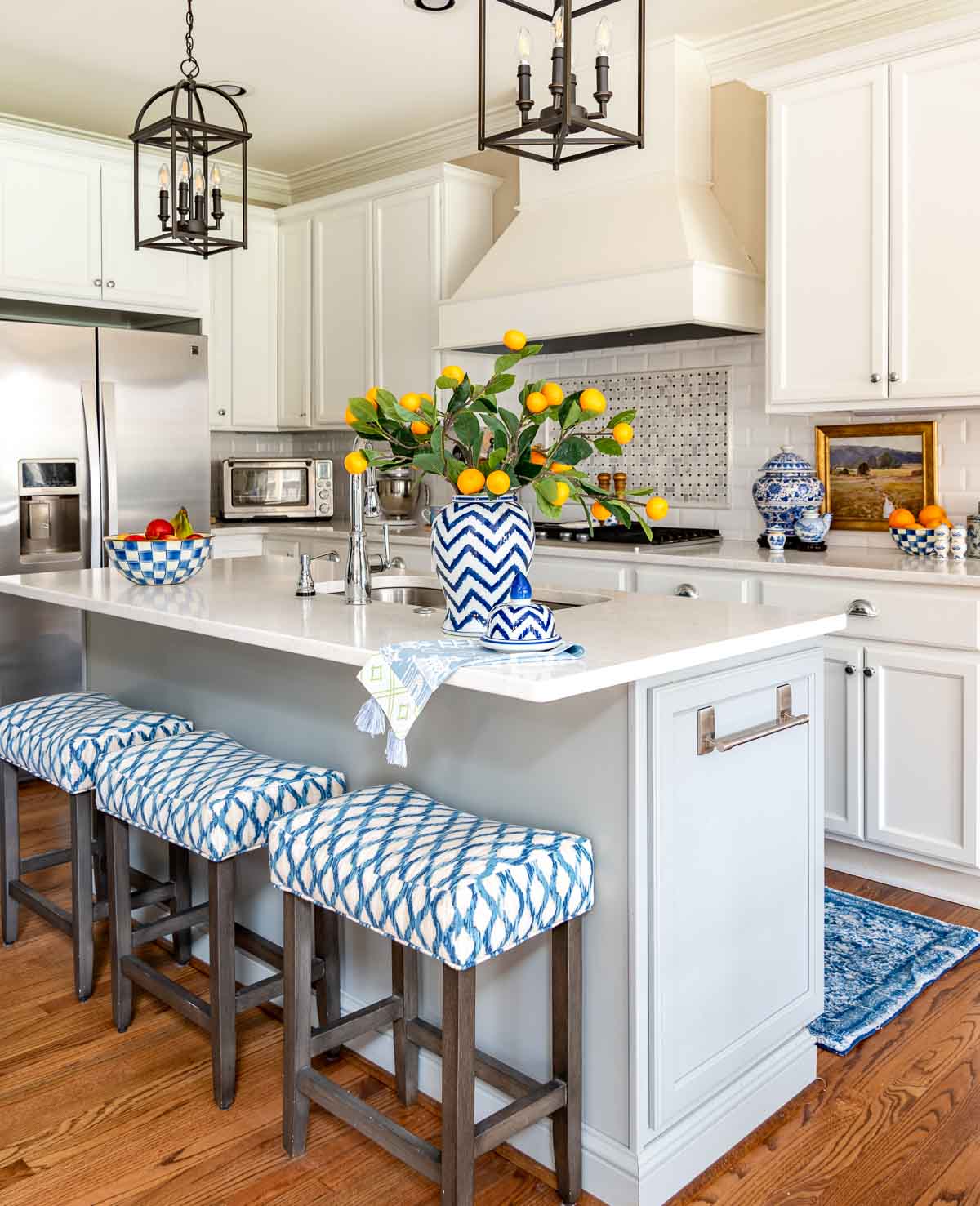
METHOD 3: Prefer to do your planning on a computer? There is a variety of free space planning software available on the web. Just Google, “free space planning software” and you’ll be presented with lots of options.
DECORATING RULE #3: FIND YOUR ROOM’S FOCAL POINT
This goes hand-in-hand with Rule #2. You can’t do a good job of space planning until you’ve determined the focal point of your room.
A focal point can be something as obvious as a fireplace or tv, but it can also be a window, a large piece of furniture, a furniture grouping, an architectural detail – anything that catches your eye as soon as you enter a room.
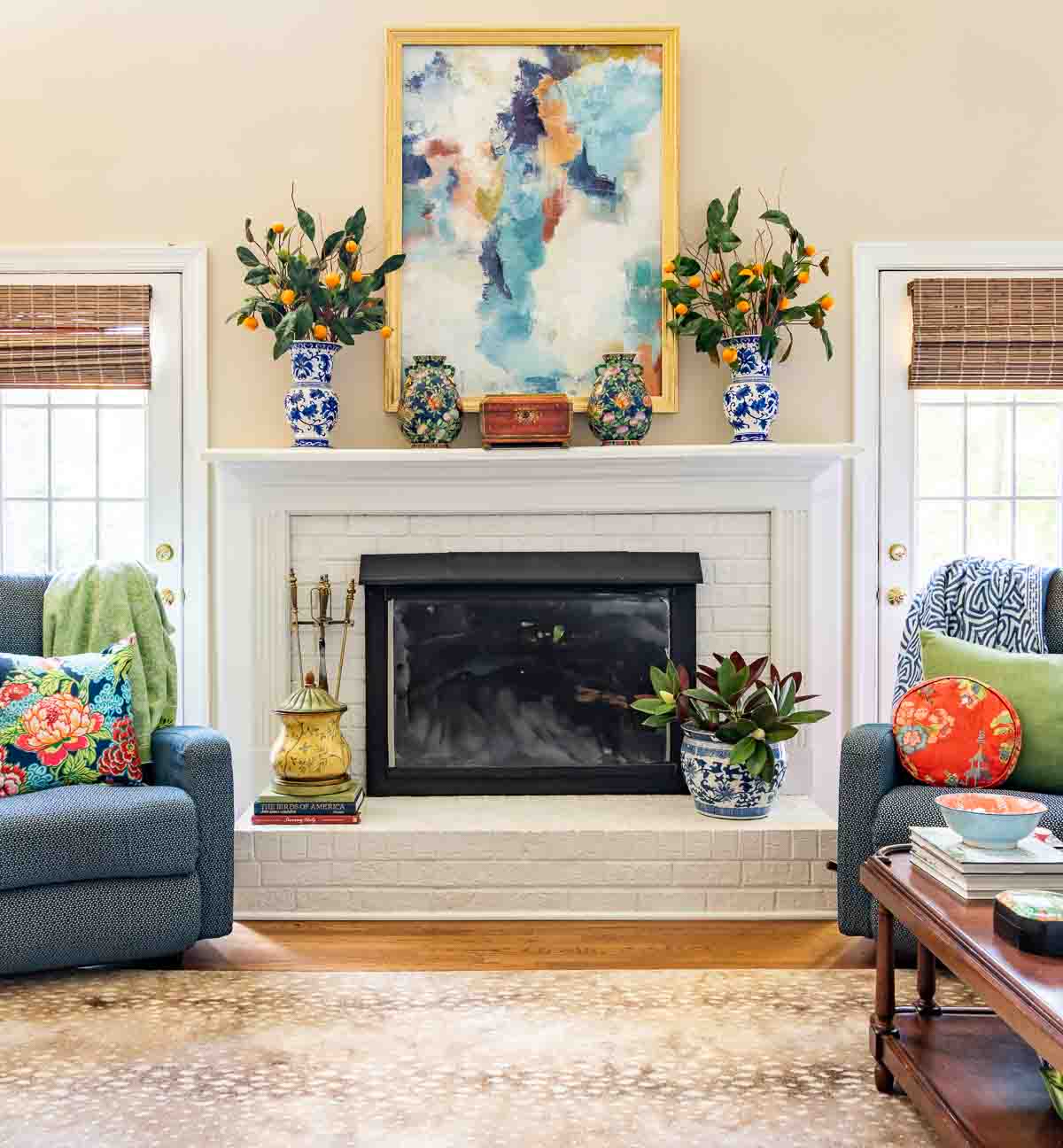
A room can also have multiple focal points, which can be a real challenge. I’ve talked about this in greater detail (with loads of tips!) in a previous blog post. I highly recommend taking these tips into consideration when doing your space planning!
DECORATING RULE #4: CHOOSE YOUR FABRIC AND RUGS FIRST
Choosing rugs and fabrics is especially true if you are painting any part of your room a color. Paint comes in thousands upon thousands of colors. You can even have paint custom mixed to match a single color in your fabric.
The reason that I take this step, before choosing my paint color(s), is that finding paint to go with a particular fabric or rug is a whole lot easier than finding fabric or rugs to go with a particular paint color.
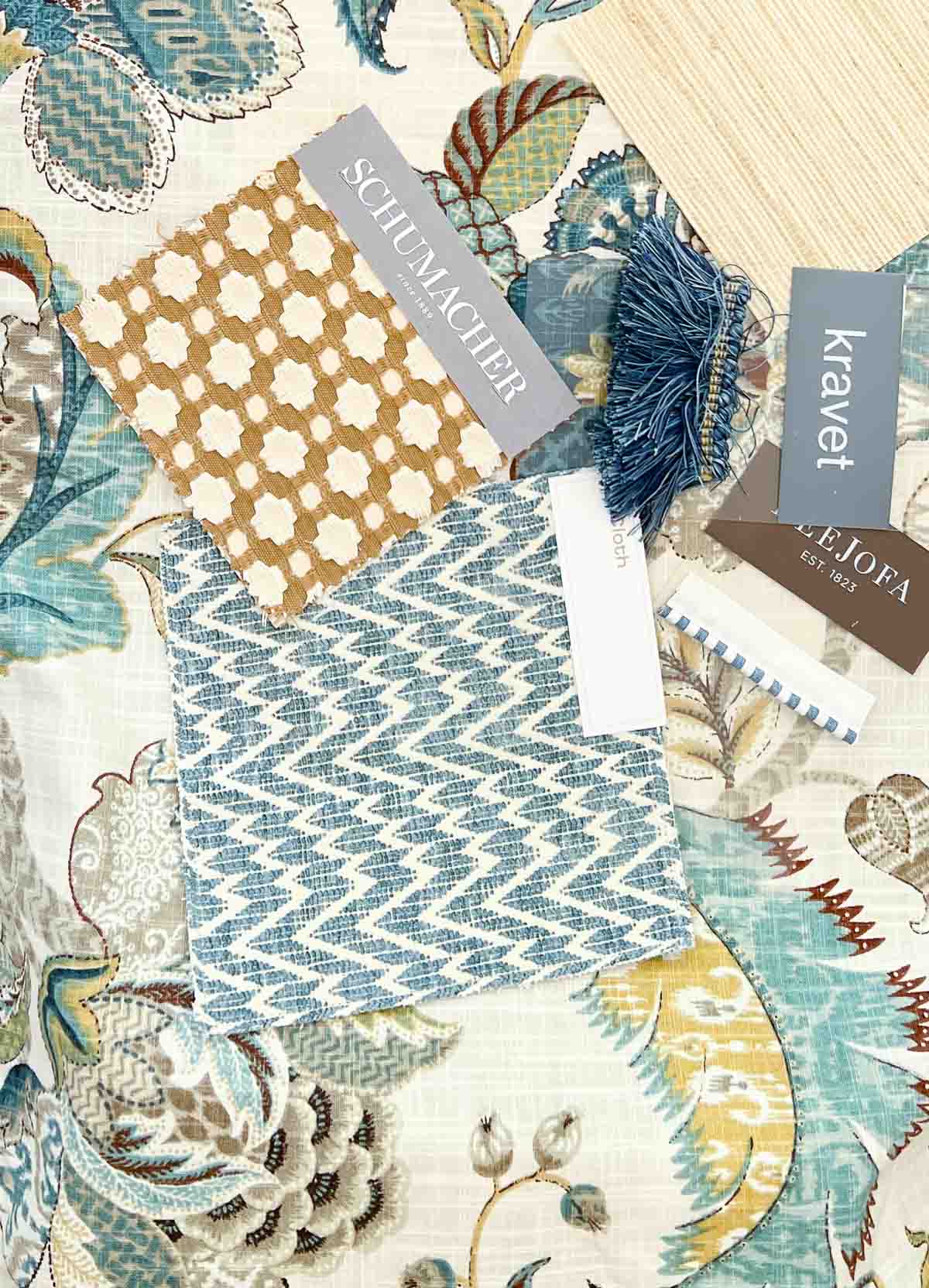
The rule applies to rooms painted with a neutral color as well. Why you ask? Well, every single paint looks different in different lighting situations.
Most neutral paints, including white, have undertones of other colors in it. Ever seen a beige room that looks pink or lavender when the sunlight hits it? Yeah, that’s what I’m talking about.
DECORATING RULE #5: JUST BECAUSE THERE’S AN EMPTY SPOT, YOU DON’T HAVE TO FILL IT
This falls into the category of less is more – but then again, it all depends upon your point of view. Many people prefer a very minimal look, so for them a lot less is more and that’s perfectly fine.
That isn’t me at all though. I enjoy having pretty things in my rooms, but I do strive to strike a balance between too much and just right.
If you’re like me and prefer to have lots of pretty things around to look at, just be careful not to go overboard or you’ll wind up with a room filled with so much stuff, your eye won’t know what to look at first.
I’ve always heard that when you’re adding jewelry to your outfit, you should add what you think will look good and then remove one thing. So I guess, the rule of thumb is to edit, edit and then edit some more.
A BONUS RULE
There are no rules. Well…technically speaking, there are decorating rules, but if I don’t like a rule – I’d don’t follow it. Seriously.
This is my home, not some designer rule setter’s home, and I’m going to do what works for my family and myself, whether it follows the rules or not. My #1 recommendation for you is that you develop the same attitude!
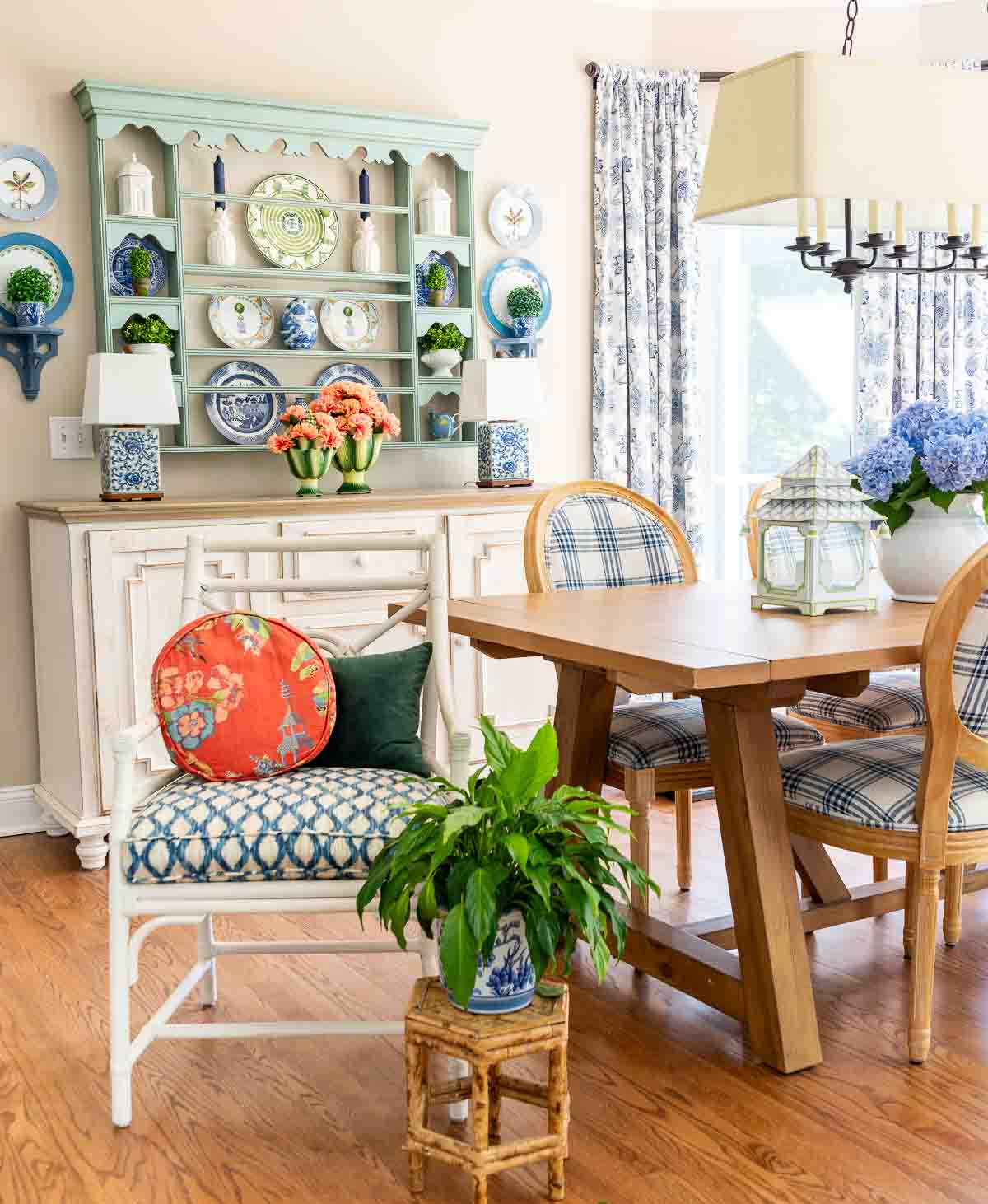
However, with that being said, let me also say that although I’ll break a rule if I don’t like it, I do try to follow certain design principles. No matter what the latest trend may be, these principles have been around for a long, long time and they just plain work.
In conclusion – you may not like to think of yourself as a rule follower, but when it comes to decorating your home, you’ll be glad that you at least followed these basics.
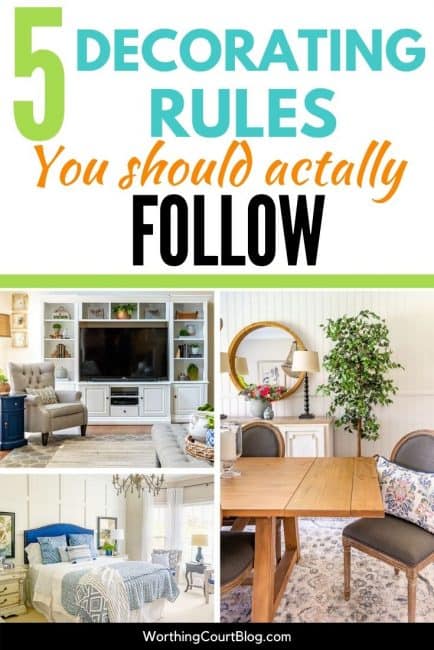
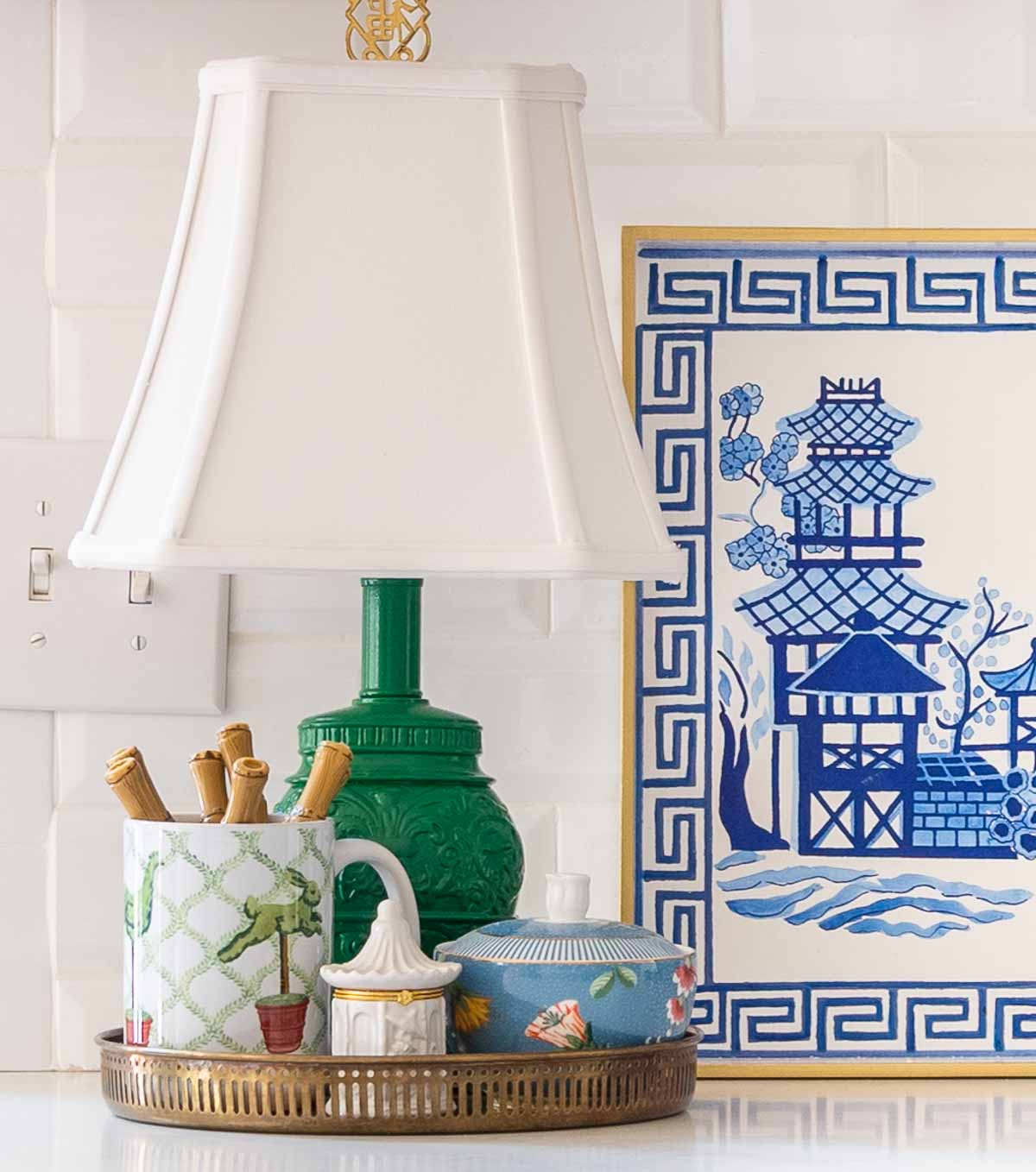

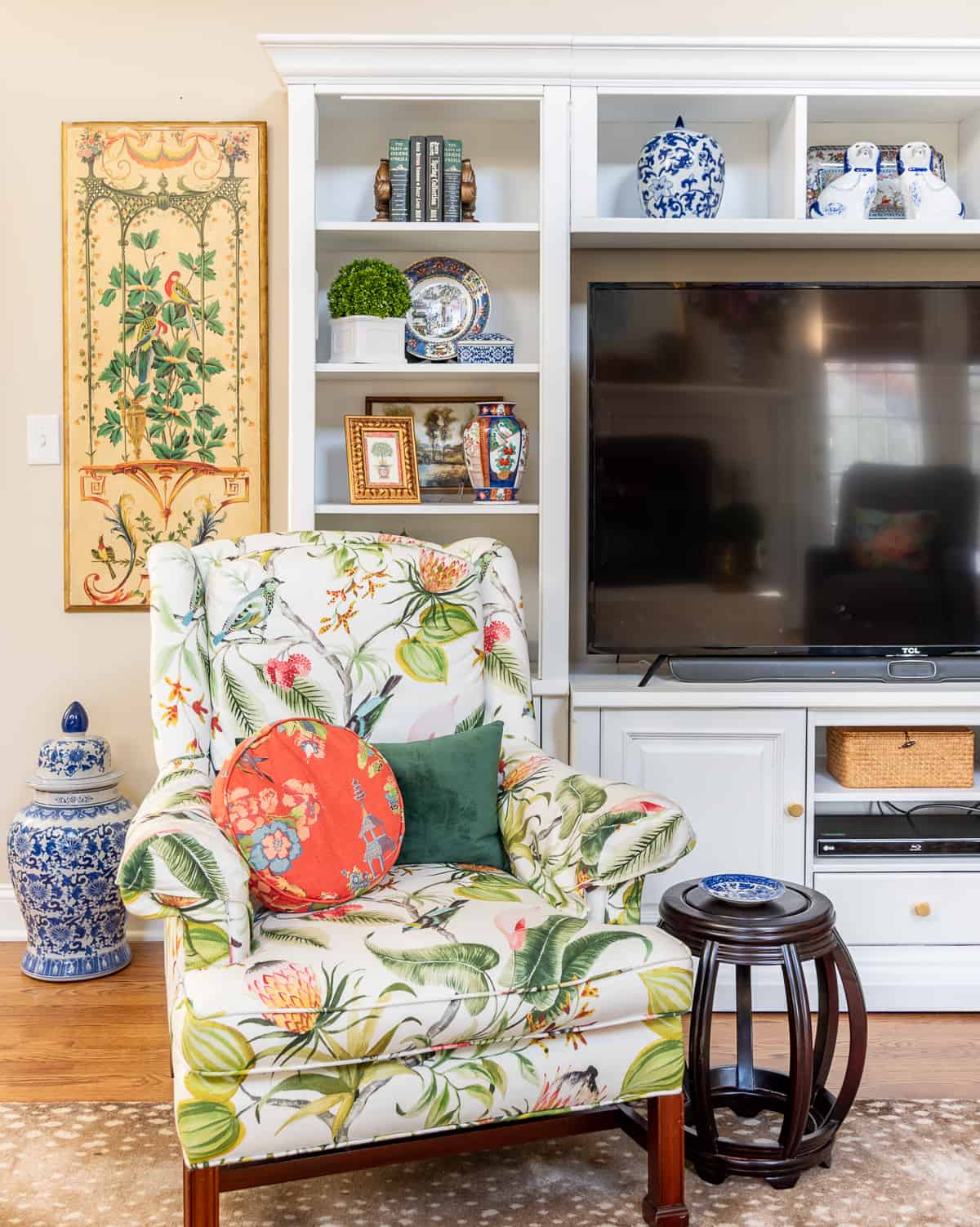
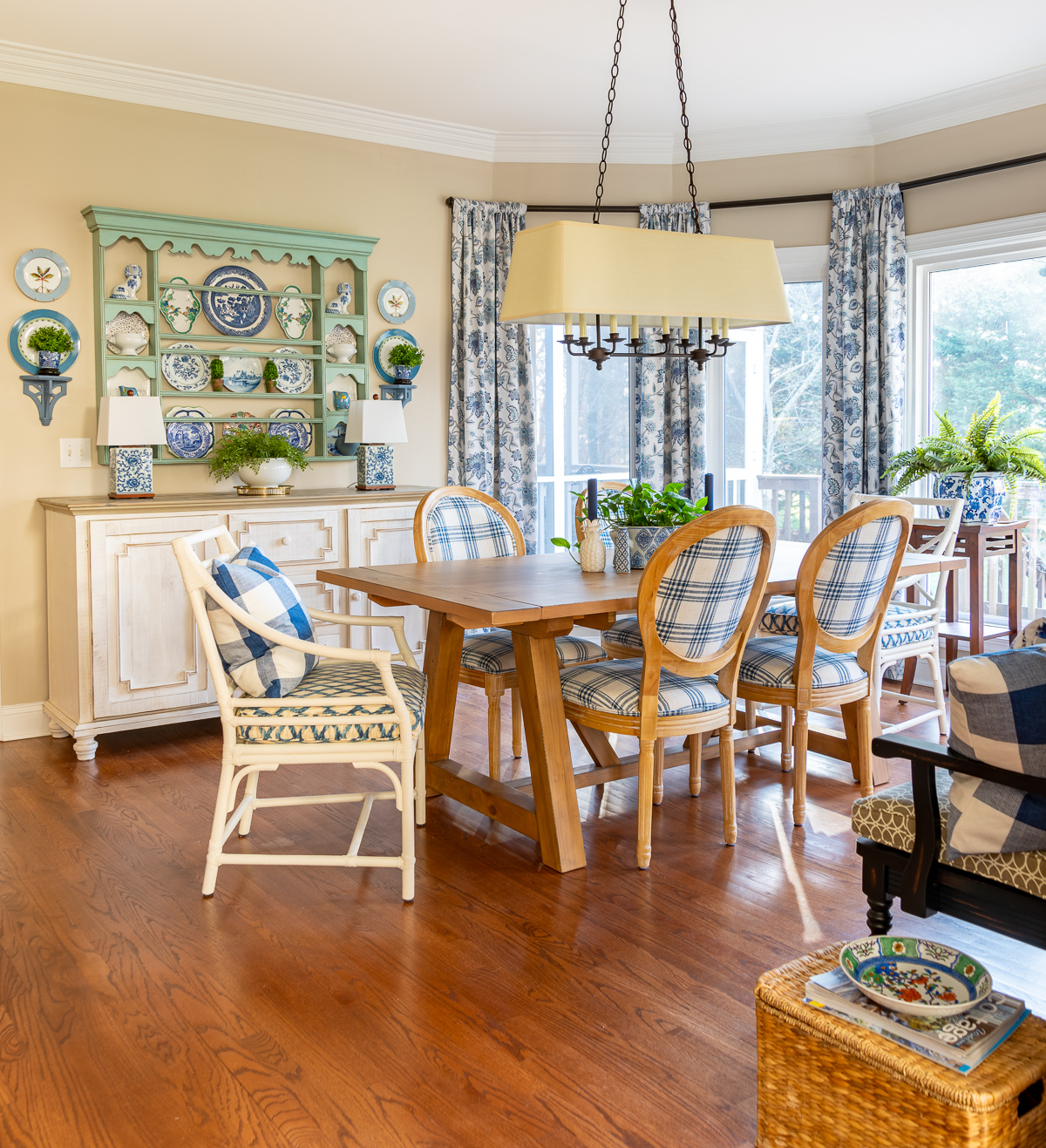
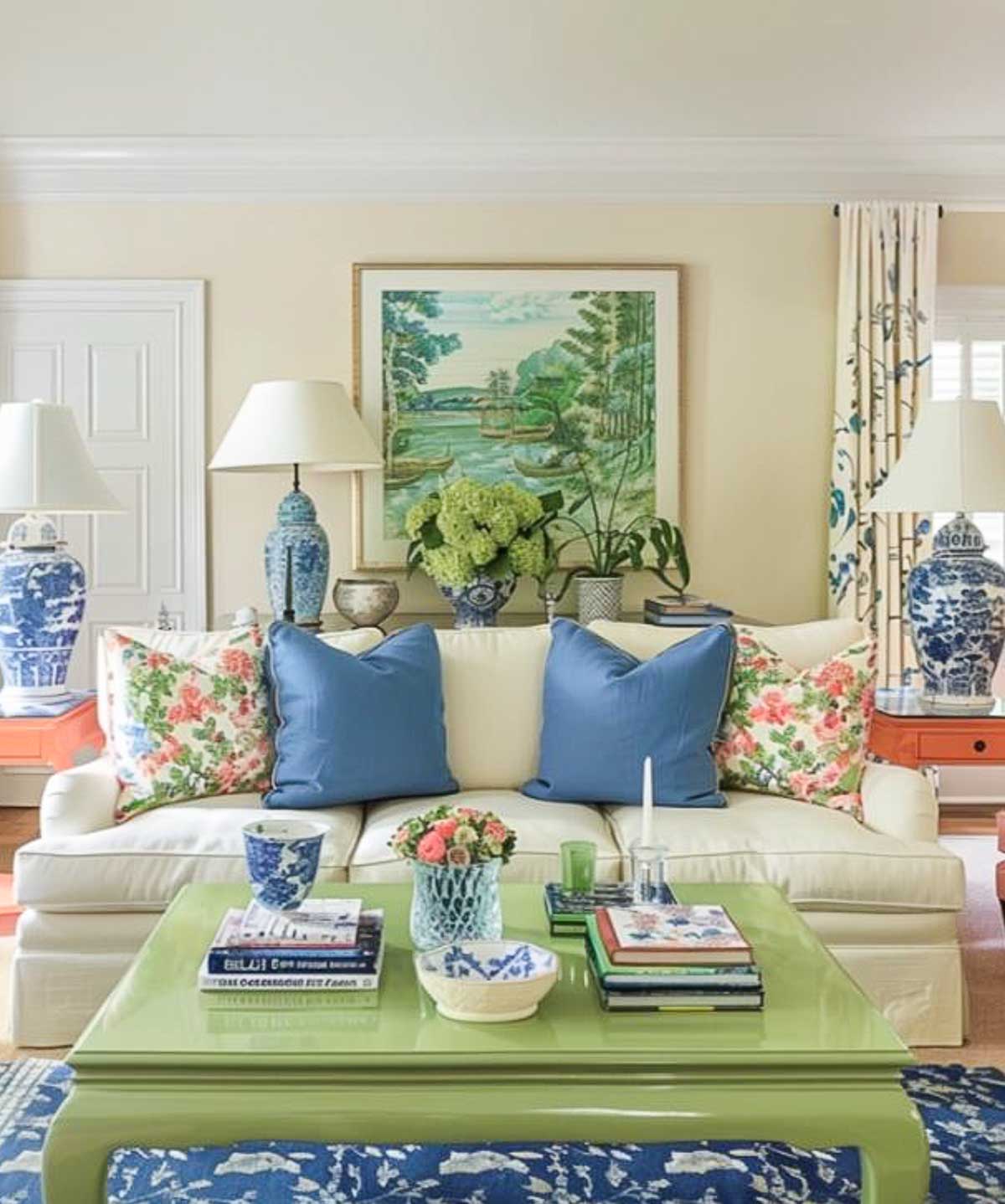
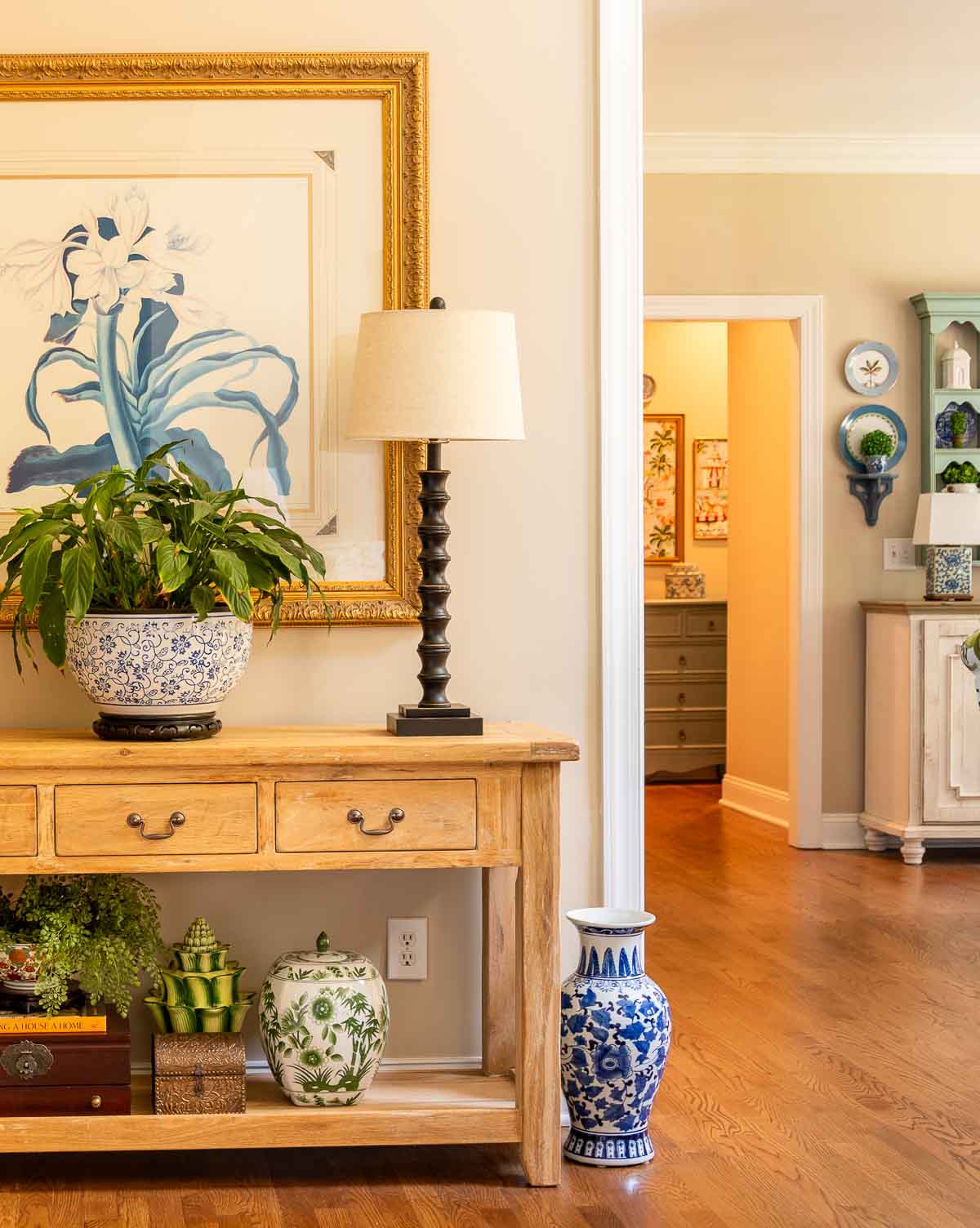
Beautiful! Can I get you to come decorate my house? Thanks for sharing at Over the Moon.
Great home decor tips! I love seeing your beautiful home. Thanks for sharing at the Inspiration Spotlight party. Pinned & Shared.
These are all great tips! I agree that if a rule doesn’t work for your space, it’s okay to change it up. Your home is lovely. Thanks for sharing at Snickerdoodle. We’ll be featuring this at today’s party.
No. 1 is my favorite rule! I do measure and use painter’s tape when in doubt. Good rules of thumb!
Great advice! I love your style!
Hi Suzy,
Thank you for sharing with us at Wonderful Wednesday! Your decorating tips are right on the money! Your amazing post will be featured at our next party! Have a great week! Hugs- Christine at Light and Savvy
Thank you for the inspiration and advice. I really enjoy your blog!
Thank you for all your Great Advise! I enjoy your blog daily
These are great tips and your photos are gorgeous! Pinned and sharing! Thank you for joining us at Family Joy Blog Link-Up Party last week. I hope you will join our next party starting Sunday at noon EST.
Suzy, these are very sensible suggestions. And I love all the photos showing how you’ve implemented them in your home. It looks very warm and inviting.
Hey, Suzy! Just wanted to let you know that we loved your 5 Basic Decorating Ideas To Live By so much when you shared it at the #HomeMattersParty last week, we’ve FEATURED it THIS WEEK! Hope you can check it out when you get a sec. Happy Friday!!!
http://lifewithlorelai.com/2017/02/09/home-matters-linky-party-122/
~Lorelai
Life With Lorelai / Home Matters Linky Party
Great rules. I love how you explain everything. Love the photos of your beautifully decorated home, too. Pinning for future reference. Thanks.
What a great post! You have to know the rules before you can break them! I definitely agree with you on #4 ! Thanks for sharing !
#HomeMattersParty
Jeannee
I’m working on striking that balance and not feeling like I need to fill blank walls all the time. Great tips, I’m pinning and sharing #HomeMattersParty
Love your ideas. I tend to fill all the spaces- it is hard not too! Rule # 4- That makes a lot of sense.
Keep them coming. Your home is beautiful.
My favorite rule…Just because you have an empty spot, doesn’t mean you have to fill it. I very guilty of this…Sometimes less is more.
I like this advice on decorating. I’m new to your blog and so excited about learning more. I think this is the best decorating I’ve seen so far!
Thank you for Rule #2! I’m facing a sofa placement dilemma in an open space living area and two opposing sofas just wouldn’t work. So I will be using your space planning technique – Thanks again – Love your blog!
This is truly helpful! I am in the process of deciding what to do for some decorating, and I get detoured very easily, and then end up with a mish mosh that wasn’t what I wanted.
I love all of your ideas. Your projects all turn out just perfect! Continue to inspire us all!!!